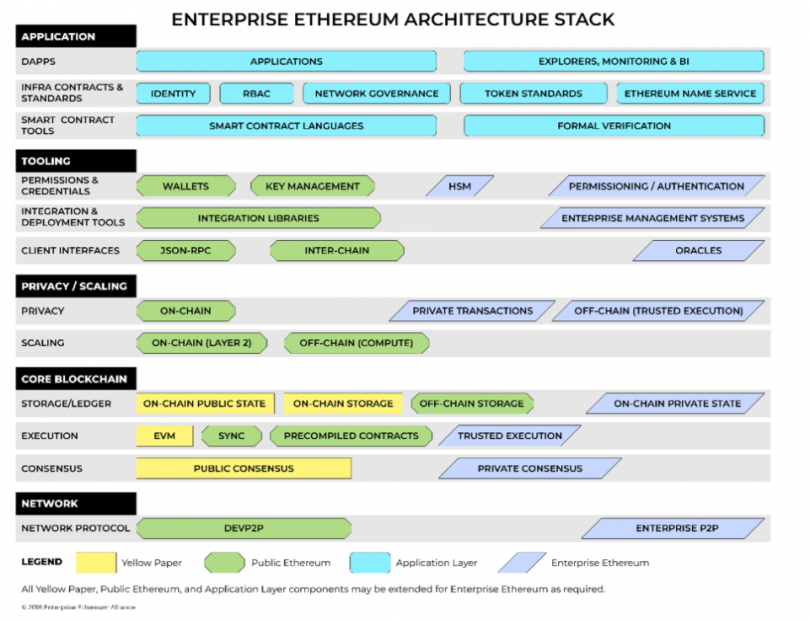Today the Enterprise Ethereum Alliance (EEA) published their technology stack diagrams. Ethereum technology has many moving parts, and enterprises expand on this when integrating to create a permissioned blockchain. So clearly defined diagrams stack makes life easier for enterprise developers.
The stack helps in directing the development of standards. Given the Alliance was formed in early 2017, there is a sense that standards are taking some time. Publication of the stack shows some progress, and also might be useful as a basis for feedback at the Ethereal summit in New York next week.
Jeremy Millar, an EEA board member, recently outlined the importance of standards and acknowledged they are hard work. That’s especially the case when the technology is a moving target.
A widely use Ethereum standard already exists: the ERC20 token standard interface. Smart contracts are an area where code will be shared and re-used by different people. In the last few months, several startups have started to sell re-usable smart contracts. Likewise, industries are likely to have standardized, reusable contracts.
“The EEA is rebuilding business infrastructure from the bottom up. By solving the universal collaboration needs of its members, the Enterprise Ethereum Architecture Stack can now serve as a critical framework element of the world’s decentralized operating system – an EEA specification that will facilitate more valuable interactions, more efficiently, between the enterprise and its customers. I look forward to seeing how sectors and industries build shared collaborative infrastructure on the EEA stack, and how such networks forge interoperation amongst one another and how each begins to use public Ethereum as part of their comprehensive, blockchain-based IT infrastructures,” said Joseph Lubin, a founding EEA member from ConsenSys, co-founder of Ethereum, and founder of ConsenSys.






